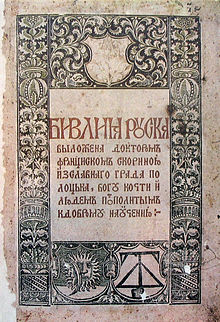
The Slavic languages, also known as the Slavonic languages, are Indo-European languages spoken primarily by the Slavic peoples and their descendants. They are thought to descend from a proto-language called Proto-Slavic, spoken during the Early Middle Ages, which in turn is thought to have descended from the earlier Proto-Balto-Slavic language, linking the Slavic languages to the Baltic languages in a Balto-Slavic group within the Indo-European family.

Cyril and Methodius (815–885) were two brothers and Byzantine Christian theologians and missionaries. For their work evangelizing the Slavs, they are known as the "Apostles to the Slavs".
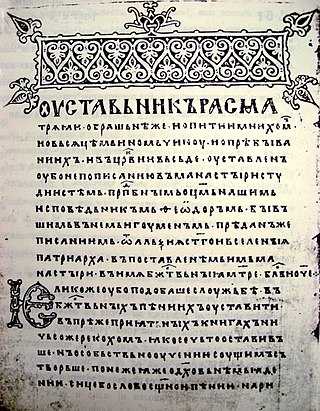
Old Church Slavonic or Old Slavonic was the first Slavic literary language.

The Bible has been translated into many languages from the biblical languages of Hebrew, Aramaic, and Greek. As of 2022 all of the Bible has been translated into 724 languages, the New Testament has been translated into an additional 1,617 languages, and smaller portions of the Bible have been translated into 1,248 other languages according to Wycliffe Global Alliance. Thus, at least some portions of the Bible have been translated into 3,589 languages.
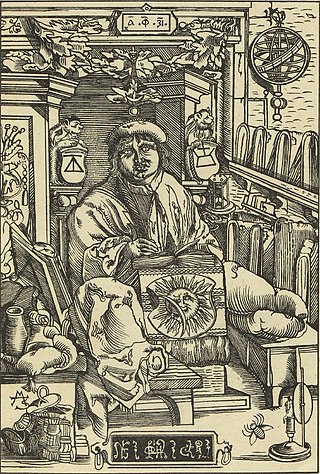
Francysk Skaryna was a Belarusian humanist, physician, and translator. He is known to be one of the first book printers in the Grand Duchy of Lithuania and in all of Eastern Europe, laying the groundwork for the development of the Belarusian izvod of the Church Slavonic language.

Church Slavonic, also known as Church Slavic, New Church Slavonic or New Church Slavic, is the conservative Slavic liturgical language used by the Eastern Orthodox Church in Belarus, Bosnia and Herzegovina, Bulgaria, North Macedonia, Montenegro, Poland, Ukraine, Russia, Serbia, the Czech Republic and Slovakia, Slovenia and Croatia. The language appears also in the services of the Russian Orthodox Church Outside of Russia, the American Carpatho-Russian Orthodox Diocese, and occasionally in the services of the Orthodox Church in America.
Hospodar or gospodar is a term of Slavonic origin, meaning "lord" or "master".
The history of the Slavic languages stretches over 3000 years, from the point at which the ancestral Proto-Balto-Slavic language broke up into the modern-day Slavic languages which are today natively spoken in Eastern, Central and Southeastern Europe as well as parts of North Asia and Central Asia.

The grapheme Ž is formed from Latin Z with the addition of caron. It is used in various contexts, usually denoting the voiced postalveolar fricative, the sound of English g in mirage, s in vision, or Portuguese and French j. In the International Phonetic Alphabet this sound is denoted with, but the lowercase ž is used in the Americanist phonetic notation, as well as in the Uralic Phonetic Alphabet. In addition, ž is used as the romanisation of Cyrillic ж in ISO 9 and scientific transliteration.

The Codex Marianus is an Old Church Slavonic fourfold Gospel Book written in Glagolitic script, dated to the beginning of the 11th century, which is, one of the oldest manuscript witnesses to the Old Church Slavonic language, one of the two fourfold gospels being part of the Old Church Slavonic canon.
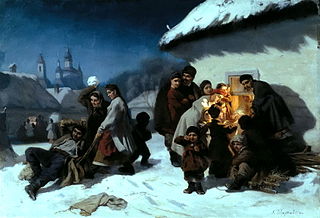
Koliada or koleda is the traditional Slavic name for the period from Christmas to Epiphany or, more generally, to Slavic Christmas-related rituals, some dating to pre-Christian times. It represents a festival or holiday, celebrated at the end of December to honor the sun during the winter solstice. It also involves groups of singers who visit houses to sing carols.

The royal Tetraevangelia of Ivan Alexander is an illuminated manuscript Gospel Book in middle Bulgarian, prepared and illustrated in 1355–1356 for Tsar Ivan Alexander of the Second Bulgarian Empire. The manuscript is regarded as one of the most important manuscripts of medieval Bulgarian culture. The manuscript, now in the British Library, contains the text of the Four Gospels illustrated with 366 miniatures and consists of 286 parchment folios, 33 by 24.3 cm in size.
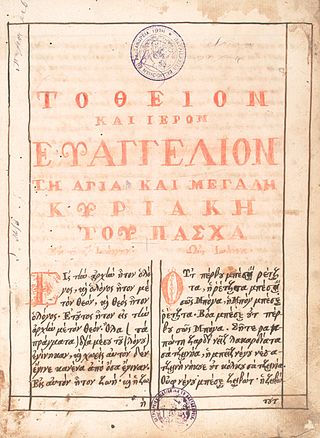
The history of Bible translations into Macedonian is connected in its early years with the history of Bible translations into Bulgarian. After the codification of Macedonian in 1945, in 1952 a liturgical edition of the four Gospels was printed as the first official translation into standard Macedonian.
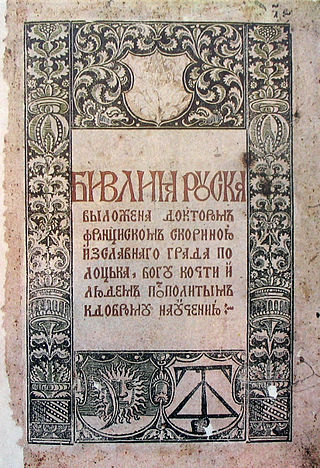
The tradition of Bible translations in Christianity in Russia begins with Slavic translations of the Bible and Old Church Slavonic.
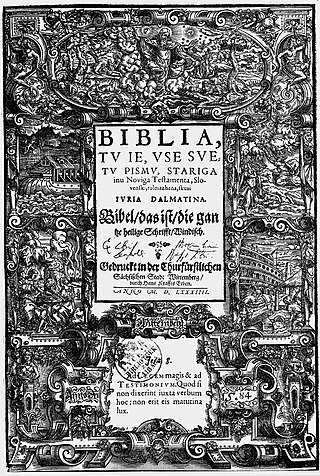
The first translation of a sentence from the Bible to Slovene appeared in the Freising Manuscripts, dating to the 10th or the 11th century. The versions of the Bible for Slovenes are most closely connected with the activity of the Reformer of Carniola, Primož Trubar and his associates and successors. They were intended for the Protestant Slovenes. Trubar translated the Gospel of Matthew, which was printed at Reutlingen in 1555. In 1557, the first part of the New Testament was published at Tübingen, the second part in 1560, and the last part in 1577. The complete New Testament was reissued in 1582. The Psalms appeared in 1566.
Bible translations into Croatian started to appear in fragments in the 14th century. Efforts to make a complete translation started in the 16th century. The first published complete translations were made in the 19th century.
The first New Testament in Prekmurje Slovene appeared in 1771: the Nouvi Zákon of István Küzmics. This was distinct from Bible translations into Slovene, such as that of Miklós Küzmics.
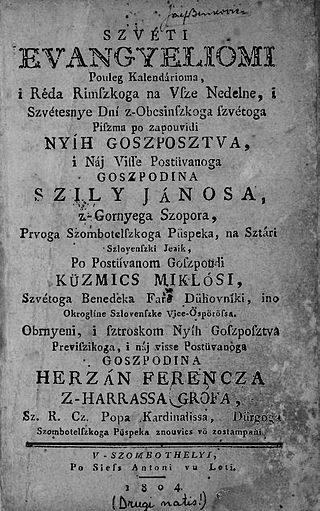
Szvéti evangyeliomi, later Szvéti evangeliomi, is the first Catholic translation of the Bible into Prekmurje Slovene. It was written by Miklós Küzmics (1737–1804), the dean of Prekmurje and the Rába Valley. The publication in 1780 was financed by János Szily, the first bishop of Szombathely. Szvéti evangyéliomi had a significant role in the formation of standard Prekmurje Slovene. It was a standard for numerous works published in Prekmurje from 1780 until 1920.
